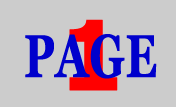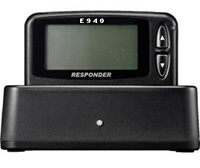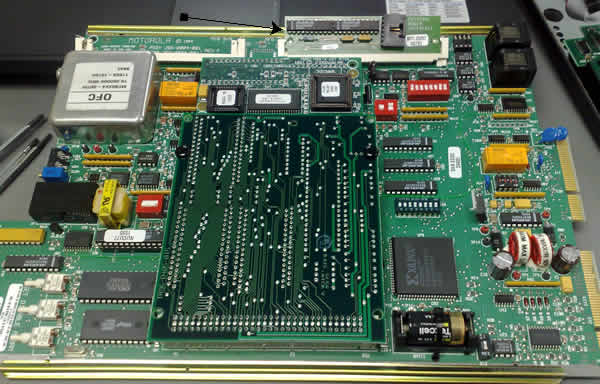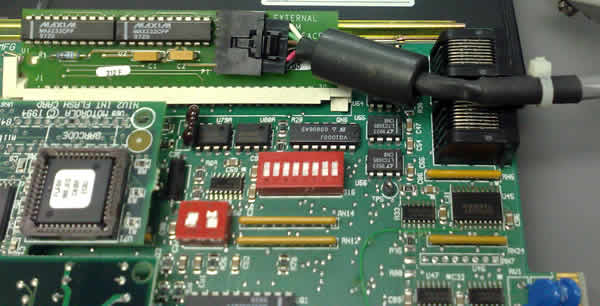|

|
BloostonLaw Telecom Update
Published by the Law Offices of Blooston, Mordkofsky, Dickens, Duffy & Prendergast, LLP
[Reproduced here with the firm's permission.]
www.bloostonlaw.com
|
|
Vol. 14, No. 32
|
September 7, 2011
|

|
Ownership Changes May Require FCC Approval
We want to remind our clients that many types of reorganizations and other transactions require prior FCC approval; and given the frequent need to implement such transactions by the end of the year, companies engaging in such transactions should immediately evaluate whether they must file an application for FCC approval, and obtain a grant, before closing on a year-end deal. Transactions requiring prior FCC approval include (but are not limited to):
-
Any sale of a company that holds FCC licenses;
-
A change in the form of organization for a corporate to and LLC, or vice versa, though such changes are not regarded as a change in entity under state law.
-
Any transfer of stock that results in a shareholder attaining a 50% or greater ownership level, or a shareholder relinquishing a 50% or greater ownership level;
-
Any transfer of stock, partnership or LLC interests that would have a cumulative affect on 50% or more of the ownership.
-
The creation of a holding company or trust to hold the stock of an FCC license holder;
-
The distribution of stock to family members, if there are changes to the control levels discussed above;
-
The creation of new classes of stockholders that affect the control structure of an FCC license holder.
-
Certain minority ownership changes can require FCC approval (
e.g.,
transfer of a minority stock interest, giving the recipient extraordinary voting rights or powers through officer or board position).
Fortunately, transactions involving many types of licenses can often be approved on an expedited basis. But this is not always the case, especially if microwave licenses are involved. Also, in some instances Section 214 authority is required, especially in the case of wireless and other telephony services.
Clients planning year-end transactions should contact us as soon as possible to determine if FCC approval is needed.
BloostonLaw contacts: Hal Mordkofsky, Ben Dickens, Gerry Duffy, John Prendergast, and Richard Rubino.
|
REMINDER: FCC regulatory fees are due no later than 11:59 p.m. (ET) on September 14.
|
INSIDE THIS ISSUE
-
DoJ files lawsuit to block AT&T/T-Mobile merger; Sprint follows suit.
-
FCC sets comment dates for FNPRM proposing microwave flexibility.
-
FCC proposes changes to streamline review process for foreign ownership of certain wireless licenses.
-
FCC puts general freeze on channel 51 applications.
-
FCC seeks comment on Draft “PEA” for Antenna Registration Program.
|
DoJ Files Lawsuit To Block AT&T/T-Mobile Merger
Sprint Follows Suit With Its Own Lawsuit;
$6 Billion Breakup Fee Sparks Speculation
The U.S. Department of Justice (DoJ) has filed an antitrust lawsuit in the U.S. District Court for the District of Columbia to block the proposed merger between AT&T and T-Mobile on the grounds that the deal would “substantially lessen competition” in the wireless market; raise prices for consumers; result in “less product variety and innovation”; and result in “poorer quality services due to reduced incentives to invest than would exist absent the merger.” DoJ is bringing its suit under Section 7 of the Clayton Antitrust Act, which is designed to prohibit anticompetitive conduct, and it asks the district court to “permanently enjoin this acquisition.” Sprint filed a similar lawsuit in the same court. And there is speculation that AT&T may not have to pay Deutsche Telekom a reported $6 billion “breakup fee” if the deal doesn't go through.
AT&T proposes to acquire T-Mobile, a subsidiary of Deutsche Telekom AG of Bonn, Germany, for cash and stock worth approximately $39 billion. The merged firm would become the largest U.S. wireless carrier, with approximately 132 million connections to wireless devices, and more than $72 billion in mobile wireless telecommunications service revenues, according to DoJ.
The Department noted that the four largest wireless carriers (including AT&T and T-Mobile; the other two are Verizon and Sprint) provide and market service on a nationwide basis. “Other providers have limited networks that cover only particular localities and regions,” DoJ said. “Those smaller carriers typically do not market to customers outside of their respective network coverage areas, and may not even sell to such customers; therefore, local or regional carriers are not an attractive, or perhaps even available, option for those customers who live and work in areas outside of these smaller providers’ respective network coverage areas,” DoJ said.
The Department further noted that currently, AT&T and T-Mobile compete “head-to-head” in 97 of the top 100 Cellular Market Areas (CMAs), and that the proposed merger would “substantially lessen competition in local markets across the nation.”
DoJ added that “whereas CMAs are appropriate geographic markets from the perspective of individual consumer choice, from a seller’s perspective, the ‘Big Four’ carriers compete against each other on a nationwide basis and AT&T’s acquisition of T-Mobile will have nationwide competitive effects across local markets.”
Using the so-called Herfindahl-Hirschman Index (HHI) for measuring market concentration, DoJ said that a merged AT&T/T-Mobile company would have a greater than 40% market share in more than half of the relevant geographic areas for mobile wireless services. “In at least 15 of the CMAs,” DoJ said, “including major metropolitan areas such as Dallas, Houston, Oklahoma City, Birmingham, Honolulu, and Seattle, the combined firm would have a greater than 50% share—i.e., more customers than all the other firms combined.”
DoJ noted that while the Big Four exclusively serve some CMAs, in others “there are also one or two local or regional providers that do serve a significant number of customers, [but] those smaller providers face significant competitive limitations, largely stemming from their lack of nationwide spectrum and networks. They are therefore limited in their ability to competitively constrain the Big Four national carriers.
Among other limitations, the local and regional providers must depend on one of the four nationwide carriers to provide them with wholesale services in the form of ‘roaming’…This places them at a significant cost disadvantage, particularly for the growing number of customers who use smartphones and exhibit considerable demand for data services.”
Essentially, DoJ is arguing that the reduction of the Big Four to the “Big Three” would provide even greater hurdles for small and regional carriers. “Such harm would affect consumers all across the nation, including those in rural areas with limited T-Mobile presence,” DoJ said.
As a result, DoJ asked the District Court to permanently enjoin and restrain AT&T and T-Mobile from carrying out the proposed merger.
BREAKUP FEE:
If the deal does not go through, AT&T is supposedly obligated to pay Deutsche Telekom a $6 billion “breakup” fee. However, Reuters and other media have reported that this may not be necessarily so. Reuters reported that AT&T would only have to pay the fee if certain conditions are met. These include (1) the merger has to receive regulatory approval within a certain timeframe; and (2) T-Mobile’s value cannot fall below a certain level.
Nevertheless, CNET and Fierce Wireless reported that Deutsche Telekom disputes the Reuters story on the breakup fee, quoting a Deutsche Telekom official: “The story from Reuters misstated the facts. The breakup fee was agreed to precisely to deal with the possibility that regulatory approval is not obtained.” CNET added that the agreement includes “the possibility that AT&T walks away from the deal because the government seeks too many concessions and compromises, including ones that exceed what the company originally agreed to with Deutsche Telekom.”
SPRINT LAWSUIT:
The Sprint lawsuit essentially says that the proposed merger would (1) harm retail and corporate customers by resulting in higher prices and less innovation; (2) give AT&T and Verizon almost 25% of the wireless market—i.e., control of more than three-quarters of that market and 90% of profits; and (3) harm Sprint and other independent wireless carriers because the AT&T/T-Mobile merger would give the combined company the leverage to control backhaul, roaming, spectrum, access to handsets, and the ability to raise competitors’ costs.
REACTION:
Depending on which telecom industry analyst you listen to, either (1) DoJ really wants to block the deal; or (2) DoJ is taking a hard line to gain leverage for conditions it wants to impose.
In announcing the lawsuit, Acting Assistant Attorney General Sharis A. Pozen said: “Here, the Antitrust Division conducted an exhaustive investigation. We conducted dozens of interviews of customers and competitors, and we reviewed more than 1 million AT&T and T-Mobile documents. The conclusion we reached was clear.
Any way you look at this transaction, it is anticompetitive.
Our action today seeks to ensure that our nation enjoys the competitive wireless industry it deserves.”
According to this statement, it appears that DoJ does not see any middle ground for AT&T and T-Mobile to compromise with the government. But that does not necessarily mean that DoJ will not use this to negotiate conditions for the proposal.
And the FCC is yet to weigh in. However, the three Democratic Commissioners issued statements in the wake of the DoJ announcement.
FCC Chairman Julius Genachowski
said “the record before this agency also raises serious concerns about the impact of the proposed transaction on competition.”
Commissioner Michael Copps
said that the “announcement shows a Department of Justice taking its procompetitive responsibilities seriously. I share the concerns about competition and have numerous other concerns about the public interest effects of the proposed transaction, including consumer choice and innovation.”
Commissioner Mignon Clyburn
said: “While the Department of Justice’s complaint indicates that the parties did not convince the Antitrust Division of the merits of the proposed merger, the FCC has not concluded its review of this merger application. The information and data requests, which the FCC staff has sent to the applicants and other parties, demonstrate that the FCC is also carefully considering the competitive issues raised by the application to ensure that the public interest is served.” The only Republican Commissioner, Robert McDowell, did not issue a statement.
Early last month, the FCC announced that it would review the proposed AT&T/T-Mobile acquisition “side-by-side” with AT&T’s proposed $1.93 billion purchase of Qualcomm’s 700 MHz MediaFLO spectrum.
"The Commission's ongoing review has confirmed that the proposed transactions raise a number of related issues, including, but not limited to, questions regarding AT&T's aggregation of spectrum throughout the nation, particularly in overlapping areas," the FCC said. It added that it may halt its informal 180-day "shot-clock" on the AT&T/Qualcomm deal and consider the deals in a "coordinated manner." The action leaves open the possibility that the FCC would review them independently later on.
BloostonLaw contacts: Hal Mordkofsky, Ben Dickens, Gerry Duffy, and John Prendergast.
FCC Sets Comment Dates For FNPRM Proposing Microwave Flexibility
The FCC has established a comment cycle for its Further Notice of Proposed Rulemaking (FNPRM) seeking comment on additional proposals to make microwave communications more flexible and cost-effective. The FNPRM was adopted at the FCC’s August open meeting, in conjunction with a Report & Order (R&O) and Memorandum Opinion and Order (MO&O) to make available new spectrum, covering almost two-thirds of the U.S. landmass, for wireless backhaul as part of the FCC’s Broadband Acceleration Initiative and its spectrum and regulatory reform agendas (BloostonLaw Telecom Update, August 17, special issue).
Comments on the WT Docket No. 10-153 FNPRM are due October 4, and replies are due October 25.
The FNPRM proposes to allow smaller antennas in certain microwave bands, as smaller antennas may be cheaper, easier to install, and generate fewer objections in the zoning process. The FNPRM also seeks comment on exempting licensees in non-congested areas from the Commission’s efficiency standards, which may make use of fixed microwave links more cost-effective in rural areas.
More specifically, the FNPRM:
-
Allows Smaller Antennas in Certain Part 101 Antenna Standards:
The Part 101 rules establish directional antenna standards designed to maximize the use of microwave spectrum while avoiding interference between operators. The FNPRM seeks comment on whether the FCC may liberalize its rules to allow smaller antennas in the 6, 18, and 23 GHz bands without materially increasing interference.
-
Exempts Licensees in Non-Congested Areas from Efficiency Standards:
Currently, FS links are subject to the same capacity requirements whether they are in rural or more densely populated urban areas. Lower traffic volumes on rural networks and greater distances between microwave links often make meeting these minimum capacity requirements much more costly in rural areas. Based on engineering analysis showing that allowing lower efficiency standards in rural areas could allow operators to substantially increase link length, the FNPRM proposes to exempt licensees in non-congested areas from the efficiency standards and to allow licensees in other areas to seek relief from the standards upon making a special showing.
-
Allows Wider Channels in 6 and 11 GHz Bands:
The FNPRM seeks comment on allowing microwave operators to create higher capacity links by licensing 60 and 80 megahertz channels in the 6 and 11 GHz microwave bands, respectively.
-
Revises Waiver Standard for Microwave Stations Near the Geostationary Arc:
To prevent interference to geostationary satellites, the Commission’s Rules require microwave stations that point near the geostationary arc to obtain a waiver. The FCC proposes to revise the rule to limit the circumstances where a waiver is necessary by conforming its rule to International Telecommunications Union (ITU) regulations.
-
Updating Definition of Payload Capacity:
The FCC proposes to modify the definition of payload capacity in its Part 101 rules to account for Internet protocol radio systems.
The
Memorandum Opinion and Order
addresses various proposals offered in response to the Notice of Inquiry (NOI) that either lack specificity, are outside the scope of this proceeding, or are not yet ripe for consideration.
Clients who may want to use the microwave bands will be pleased to know that the Commission has declined to permit the licensing of “auxiliary stations” (using low-gain antennas with large side-lobe radiation so as to allow the main fixed station to communicate with multiple auxiliary stations situated along the side lobes of the antenna) in the FS bands. Last October, a group of our clients opposed a petition proposing the licensing of these auxiliary stations claiming that such operation had the potential for causing interference to conventional microwave operations and limiting the availability of microwave spectrum in the future. The Commission has now agreed and indicated that such auxiliary stations might better be accommodated in the upper microwave bands (24 and 39 GHz) and in LMDS.
BloostonLaw contacts: Hal Mordkofsky, John Prendergast, Richard Rubino, and Cary Mitchell.
FCC Proposes Changes To Streamline Review Process For Foreign Ownership Of Certain Wireless Licenses
At its August 9 open meeting, the FCC adopted a
Notice of Proposed Rulemaking (NPRM)
to reduce regulatory burdens and streamline the foreign ownership review process for U.S. companies with common carrier radio licenses (
e.g.,
wireless phone companies) and certain aeronautical radio licenses. The proposals would ensure that the Commission continues to receive the information it needs to serve the public interest while reducing the number of required filings by more than 70%. The
NPRM
does not address foreign ownership of broadcast licensees.
Section 310(b)(4) of the Communications Act establishes a 25% benchmark for foreign investment in U.S. companies that directly or indirectly control a U.S. broadcast, common carrier, or aeronautical radio station licensee. It also grants the Commission discretion to allow higher levels of foreign ownership unless such ownership is inconsistent with the public interest.
The
NPRM
seeks comment on proposed measures to revise and simplify the process for reviewing requests for higher levels of foreign ownership in wireless common carrier and aeronautical licensees, and spectrum lessees. The proposed changes would purportedly provide greater transparency and more predictability as to what information the Commission needs to carry out its statutory duties under the Act, and would reduce costs for U.S. wireless carriers seeking approval of foreign ownership above the 25 percent benchmark.
Comments in this IB Docket No. 11-133 proceeding will be due 45 days after publication of the item in the Federal Register, and replies will be due 30 days thereafter.
BloostonLaw contacts: Hal Mordkofsky, John Prendergast, Richard Rubino, and Cary Mitchell.
FCC Puts General Freeze On Channel 51 Applications
The FCC has issued a Public Notice announcing an immediate general freeze on the filing of new applications on channel 51 and the processing of pending applications on channel 51. The FCC also (1) lifted the existing freeze as applied to, and will accept, petitions for rulemaking filed by full power television stations seeking to relocate from channel 51 pursuant to a voluntary relocation agreement; and (2) opened a 60-day window for parties with pending low power television station applications on channel 51 to amend their applications to request an alternate channel assignment.
This is a positive development for Lower 700 MHz licensees, as channel 51 is adjacent to a portion of the Lower 700 MHz A-Block. Television broadcasting on channel 51 and the potential for adjacent-channel interference impedes the ability of Lower 700 MHz A-Block licensees to provide efficient service.
To permit the Commission to evaluate the matters raised in the petition filed by CTIA-The Wireless Association and the Rural Cellular Association (RCA), the Media Bureau announced a freeze, effective immediately, on the filing of: (1) applications for low power television, TV translator, replacement translators, and Class A television facilities on channel 51, including flash-cut, digital companion channels, and displacement applications on this channel; and (2) applications for minor change for low power and full power television stations on channel 51. The FCC said it is taking this action to preserve the status quo and to ensure that new applications are not filed in anticipation of the future limitations proposed in the CTIA/RCA petition.
The FCC said the freeze is temporary while it considers the issues raised by the petitioners and affects only the submission of applications for new or modified facilities. It does not affect existing full power or low power television stations on channel 51. Those stations may continue to operate and/or construct previously-authorized facilities.
The FCC said that during the freeze, it will continue to accept applications for minor modification where the applicant can demonstrate that waiver of the freeze is necessary to permit the station to make changes to its existing facility for technical or other reasons to maintain quality service to the public. Therefore, stations needing to make critical modifications to their operating facilities will not be foreclosed from doing so.
During the freeze, the Commission will not accept any applications for new low or full power television facilities on channel 51. The Media Bureau will consider, on a case-by-case basis, requests for waiver of this freeze when an application for modification of an existing low or full power television facility is necessary or otherwise in the public interest for technical or other reasons to maintain quality service to the public, such as when facilities are damaged or otherwise must be replaced; zoning restrictions preclude tower construction at a particular site; or unforeseen events, such as extreme weather events or other extraordinary circumstances, require relocation to a new tower site.
Such applications will be eligible for a waiver of the freeze only when the facilities proposed do not expand the station’s existing coverage area and merely propose to replace existing service. Specifically, full power television modification applications will not be eligible for a waiver of the freeze if they would increase a station’s DTV service area in one or more directions beyond the combined area resulting from the station’s parameters as defined in the following: (1) the Post-Transition DTV Table of Allotments; (2) Commission authorizations (license and/or construction permit); and (3) applications on file with the Commission prior to implementation of the freeze. The FCC will not accept low power television modification applications that would increase the station’s protected service contour. The FCC will consider waivers of the freeze for applications that propose an expansion of service where the applicant can show that some expansion of service is necessary in order to preserve existing coverage or quality of service.
The FCC said its decision to impose this freeze is procedural in nature, and therefore the freeze is not subject to the notice and comment and effective date requirements of the Administrative Procedure Act. Moreover, the FCC found that there is good cause for not delaying the effect of the freeze until 30 days after publication in the Federal Register. Such a delay would be impractical, unnecessary, and contrary to the public interest because it would undercut the purposes of the freeze.
To facilitate the clearing of channel 51, however, the FCC will accept petitions for rulemaking filed by full power television stations seeking to relocate from channel 51 pursuant to a voluntary relocation agreement.
In addition, the FCC said it will not apply the freeze to applications by low power television channel 51 licensees and permittees proposing to relocate to a new operating channel below 51. The Commission is expected to issue a Notice of Proposed Rulemaking (NPRM) regarding the future licensing of TV broadcasting stations on channel 51.
Amendments filed in response to this Public Notice will be treated as “minor changes” to the pending applications, and thus no filing fees will be required, the FCC said. Amendments must be filed electronically using FCC Form 346. Paper-filed amendments will not be accepted.
BloostonLaw contacts: Hal Mordkofsky, John Prendergast, Richard Rubino, and Cary Mitchell.
FCC Seeks Comment on Draft “PEA” For Antenna Registration Program
To comply with its obligations under the National Environmental Policy Act (NEPA), the FCC is conducting a Programmatic Environmental Assessment (PEA) of its Antenna Structure Registration (ASR) program. The purpose of the PEA is to evaluate the potential environmental effects of the Commission’s ASR program. On August 26, the Wireless Telecommunications Bureau released the Draft PEA on the ASR program,
and invites comment on the Draft PEA by October 3.
The Draft Programmatic Environmental Assessment of the Antenna Structure Registration Program (ASR EA Program) is an outgrowth of the FCC’s proposed interim rules that would impose substantial burdens on antenna tower owners subject to the ASR requirements. In particular, the ASR EA Program considers several different alternatives or options that could potentially impose significant costs and/or regulatory burdens on tower owners that are subject to the FCC’s ASR Rules. In addition to current requirements not related to migratory birds, these include: (a) requiring a 30-day public notice period (and potentially the filing of an environmental assessment (EA)) for all towers that are subject to the FCC’s ASR Rules — irrespective of whether the Federal Aviation Administration (FAA) changes its obstruction lighting in order to eliminate red steady burning lights on antenna towers that are equipped with flashing red lights; (b) requiring the filing of an EA for all new ASR registered towers that are located outside of an antenna farm, regardless of height, use of guy wires or lighting scheme — towers in an antenna farm would require an EA only if it involved a substantial increase in size over existing towers or a change in lighting to steady burning lighting. EAs would also need to consider the effects not only on migratory birds, but also on Bald Eagles and Golden Eagles.
Another alternative would base the preparation of an EA on a combination of location and structural/lighting features. Thus, any new registered tower that requires an EA under existing rules that is located within 660 feet/201 meters of a Bald Eagle nest or 0.6mile/1 kilometer of a Golden Eagle nest would require an EA. Additionally, if a proposed tower was located near a ridge line, coastal zone, bird staging area or colonial nesting site, an EA would be required if the tower was more than 450 feet tall or would use red steady burning lights or guy wires. However, if a tower was not located in any of these areas or otherwise have any of the features described above, it would be categorically excluded under this alternative. Finally, towers in an antenna farm, replacement towers and modifications to existing towers would require an EA under the same circumstances as a new tower if there is a substantial increase in size or if red-steady burning lights are added to a tower that is located along a ridgeline, coastal zone, bird staging area or colonial nesting site.
Finally, the FCC is also considering an option what would only require the submission of an EA for any proposed new tower or replacement/modification of an existing tower that involves a substantial increase in size that is more than 450 feet above ground level, irrespective of location, lighting scheme or use of guy wires. Under this proposal, any antenna tower that is less than 450 feet above ground level would be categorically exempt from the preparation of an EA unless a condition requiring the filing of an EA under the FCC’s existing rules is present.
The comment cycle associated with the ASR EA Program provides AICC with another the opportunity to oppose the environmentalists demands for the protection of migratory birds that will likely impose significant costs and delay on tower owners — especially where it is recognized that regardless of the option or alternative selected by the FCC, the impact on migratory bird mortality at the national level will be insignificant, and that perhaps the best solution to mitigate avian mortality from collisions with antenna towers would be to change the lighting specifications mandated by the FAA. As a result, the industry should advocate that the FCC adopt the least restrictive alternative — namely, that an EA be required for any proposed new tower or replacement/modification of an existing tower that involves a substantial increase in size that is more than 450 feet above ground level. In this way, clients can go on record to support a regulatory scheme that will minimize the costs and delays that would be created by unnecessary regulation, especially when taken in context, avian mortality is not significant.
Under the ASR program, owners of antenna structures that are taller than 200 feet above ground level or that may interfere with the flight path of a nearby airport must register those structures with the FCC. The antenna structure owner must obtain painting and lighting specifications from the FAA and include those specifications in its registration prior to construction. The ASR program allows the FCC to fulfill its statutory responsibility to require painting and lighting of antenna structures that may pose a hazard to air navigation.
The FCC has established a website,
http://www.fcc.gov/pea
, which contains information and downloadable documents relating to the PEA process, including the Draft PEA. The website also allows individuals to contact the Commission.
On September 20, from 2:30pm until 5:00pm, Eastern Time, the FCC will hold a meeting for the public to provide input on the Draft PEA. The meeting will take place in the Commission’s Meeting Room, 445 12th Street, SW, Washington, DC. Audio/video coverage of this meeting will be broadcast live with open captioning over the Internet from the FCC's web page at
www.fcc.gov/live
.
BloostonLaw contacts: Hal Mordkofsky, John Prendergast, and Richard Rubino.
FCC SETS TENTATIVE AGENDA FOR SEPTEMBER 22 OPEN MEETING:
The FCC has announced that the following items will be on the tentative agenda for the next open meeting scheduled for Thursday, September 22, 2011:
-
Framework for Next Generation 911 Deployment, Notice of Proposed Rulemaking.
A Notice of Proposed Rulemaking to accelerate the development and deployment of Next Generation 911 (NG911) technology to improve public safety by enabling the public to send text, photos, videos, and data communications to 911 Public Safety Answering Points (PSAPs) and enhancing the information available to PSAPs and first responders for assessing and responding to emergencies.
(We note than on August 10, the FCC issued a News Release enumerating FCC Chairman Julius Genachowski’s plan for NG911: “Under the Chairman’s five-step action plan, the FCC will: (1) develop automatic location accuracy mechanisms for NG911, (2) facilitate the completion and implementation of NG911 technical standards for the hardware and software that carriers and public safety answering points (PSAPs) use to communicate NG911 information, (3) work with state 911 authorities, other Federal agencies, and other governing entities to provide technical expertise and develop a coordinated approach to NG911 governance, (4) develop an NG911 Funding Model focused on the cost-effectiveness of the NG911 network infrastructure linking PSAPs and carriers and (5) enable consumers to send text, photos, and videos to PSAPs.”)
The second item on the tentative agenda is as follows:
-
Deployable Aerial Communications Architecture White Paper.
The Public Safety and Homeland Security Bureau will present a white paper on the use of deployable aerial communications architecture to facilitate the ability of first responders to communicate with each other and consumers to reach first responders in the wake of natural and manmade disasters, even in situations where there is severe damage to terrestrial communications infrastructure. The report will make recommendations regarding next steps the FCC should consider to promote the development and use of deployable aerial communications architecture.
BloostonLaw contacts: Hal Mordkofsky, Ben Dickens, Gerry Duffy, and John Prendergast.
FCC SETS COMMENT DATES FOR PROPOSED 911 ACCURACY REQUIREMENTS REGARDING WIRELESS VoIP SERVICES:
The FCC has set comment deadlines for its
Second Further Notice of Proposed Rulemaking (FNPRM)
and
Notice of Proposed Rulemaking (NPRM)
regarding measures to improve 911 availability and location determination for users of wireless interconnected Voice over Internet Protocol (VoIP) services (BloostonLaw Telecom Update, July 20).
Comments in this PS Docket No. 07-114, GN Docket No. 11-117, and WC Docket No. 05-196 proceeding are due October 3, and replies are due Nov. 2.
First, the Commission considers whether to apply its 911 rules to “outbound-only” interconnected VoIP services,
i.e.,
services that support outbound calls to the public switched telephone network (PSTN) but not inbound voice calling from the PSTN. These services, which allow consumers to place IP-based outbound calls to any telephone number, have grown increasingly popular in recent years. The Commission asks whether such services are likely to generate consumer expectations that they will support 911 calling and consider whether to extend to outbound-only interconnected VoIP service providers the same 911 requirements that have applied to other interconnected VoIP service providers since 2005. The Commission seeks comment on whether its proposal to amend the definition of interconnected VoIP service for 911 purposes has any impact on its interpretation of certain statutes that reference the Commission's existing definition of interconnected VoIP service. BloostonLaw contacts: Hal Mordkofsky, John Prendergast, and Cary Mitchell.
COMMENT DATES SET FOR “CRAMMING” NPRM:
The FCC has set comment dates for its Notice of Proposed Rulemaking (NPRM) regarding proposed amendments to the Truth-in-Billing rules that would prohibit “cramming” on phone bills (BloostonLaw Telecom Update, July 13). Specifically, the FCC would require wireline telephone companies (
i.e.
wireline telecommunications common carriers) to notify subscribers clearly and conspicuously, at the point of sale, on each bill, and on their Web sites, of the option to block third-party charges from their telephone bills, if the company offers that option, and place charges from non-telephone company third parties in a bill section separate from telephone company charges, and would require both wireline and wireless (
i.e.
Commercial Mobile Radio Service (CMRS) common carriers) telephone companies to notify subscribers on all telephone bills and on their Web sites that subscribers may file complaints with the Commission, provide the Commission's contact information for the submission of complaints, and include on Web sites a link to the Commission's complaint Web page.
Comments in this CG Docket Nos. 11-116 and 09-158; and CC Docket No. 98-170 proceeding are due October 24, and replies are due November 21.
BloostonLaw contacts: Hal Mordkofsky, Ben Dickens, Gerry Duffy, and John Prendergast.
FCC SEEKS COMMENT ON PSST’s PROPOSED BUDGET:
On May 12, 2010, the FCC released an order granting 21 petitioners conditional waivers to pursue early deployment of state, local, or regional 700 MHz public safety broadband wireless networks under lease agreements with the Public Safety Spectrum Trust (PSST). Pursuant to that order, the PSST submitted for the Public Safety and Homeland Security Bureau’s approval on June 11, 2010, its proposed first-year budget and corresponding annual spectrum lease fee for the waiver recipients for administration of the leases. The Bureau approved the budget and associated fee as proposed on August 11, 2010. On August 15, 2011, the PSST filed in PS Docket 06-229 its proposed second-year budget and associated spectrum lease fee, which cover “the expenses that the PSST anticipates it will incur between September 1, 2011 and August 31, 2012 in carrying out the responsibilities set forth in the [Waiver Order].” The Bureau seeks comment generally on the budget and fee proposed by the PSST. In particular, the Bureau invites comment from the waiver recipients as to the reasonableness of the PSST’s proposal. In addition, the Bureau seeks comment on the PSST’s request that the Bureau “ease the PSST reporting requirements from Monthly to Quarterly during the period September 1, 2011 through August 31, 2012.”
Comments in this PS Docket No. 06-229 proceeding are due September 12.
There is no opportunity for replies. BloostonLaw contacts: Hal Mordkofsky, John Prendergast, Richard Rubino, and Cary Mitchell.
FCC SEEKS INPUT FOR 8
th
ANNUAL BROADBAND PROGRESS REPORT:
The FCC has released a Notice of Inquiry (NOI) seeking input on its annual broadband progress report. In the last two broadband progress reports, the Commission found that broadband was not being deployed to all Americans in a reasonable and timely fashion. Most recently, in the
2011 Seventh Broadband Progress Report,
the Commission found that as many as 26 million Americans live in areas unserved by broadband. The Commission further observed that “[m]any of these Americans live in areas where there is no business case to offer broadband, and where existing public efforts to extend broadband are unlikely to reach; they have no immediate prospect of being served, despite the growing costs of digital exclusion.” The Commission found that its assessment of the availability of broadband is broader than just physical deployment of broadband networks, and thus should also include an assessment of other factors such as broadband cost, quality, and adoption by consumers. As such, the Commission found that notwithstanding the substantial benefits of broadband, home broadband adoption remains low, citing barriers such as lack of affordability, lack of digital literacy, and a perception by respondents that the Internet is not relevant or useful to them. Regarding the latest NOI, the FCC said it encourages individual consumers, consumer advocates, analysts, companies, policy institutes, governmental entities, and others to provide objective, empirical data and evidence to help the FCC complete this task.
Comments in this GN Docket No. 11-121 proceeding will be accepted through October 4.
BloostonLaw contacts: Ben Dickens, Gerry Duffy, and Mary Sisak.
FCC GRANTS TEXAS A WAIVER TO BEGIN EARLY DEPLOYMENT OF 700 MHz PUBLIC SAFETY SYSTEM:
On May 26, Harris Corp. filed a Petition for Clarification addressing the FCC’s Public Safety and Homeland Security Bureau’s May 12 Order granting the State of Texas a waiver to begin early deployment of a 700 MHz public safety wireless broadband network. In the interest of eliminating any uncertainty, the Bureau said, it clarifies that it does not require, endorse, or favor any specific form of local procurement and in particular does not endorse or require the State of Texas or any jurisdictions that deploy networks under its waiver to use a sole-source method for obtaining services or equipment for their networks. The Bureau said that “a network operator should be able to procure cores, radio access network equipment, and devices, all from multiple vendors, without sacrificing functionality.” BloostonLaw contacts: Hal Mordkofsky, John Prendergast, and Cary Mitchell.
FCC SEEKS COMMENT ON LOCAL COMMUNITY RADIO ACT ISSUES:
The FCC has adopted a Notice of Proposed Rulemaking (NPRM) to address how the recently enacted Local Community Radio Act (LCRA) will impact future LPFM and translator station licensing. Section 5 of the Communications Act requires the Commission to ensure that: Licenses are available for both LPFM and translator stations; licensing decisions are based on community needs; and translator and LPFM stations remain equal in status. The item tentatively finds that a previously adopted cap on translator applications is inconsistent with the LCRA's directives. It considers three alternate processing schemes, and tentatively concludes that a market-specific processing policy would most faithfully implement section 5's directives. The item sets forth proposed LPFM channel floors for the top 150 markets, and proposes to dismiss all translator applications in markets where the number of available LPFM channels is below the channel floor. The item also considers whether the Commission should take additional steps to prevent the trafficking of translator construction permits, and whether translators from Auction No. 83 should be allowed to rebroadcast the signals of AM stations at night. Comments in this MM Docket No. 99-25 and MB Docket No. 07-172 proceeding will be accepted through September 12. BloostonLaw contacts: Hal Mordkofsky, John Prendergast, and Richard Rubino.
FCC PROPOSES $20 MILLION IN FINES IN PREPAID CALLING CARD SCAM:
The FCC has proposed forfeitures totaling $20 million from STi Telecom Inc. (formerly Epana Networks, Inc.), Lyca Tel, LLC, Touch-Tel USA, LLC and Locus Telecommunications, Inc. for apparently violating the Communications Act by using deceptive marketing practices to sell prepaid calling cards, scamming consumers out of millions of dollars, mostly from low-income and minority communities. The FCC is proposing $5 million in forfeitures for each company. Under Commission precedent, unfair and deceptive marketing is an unjust and unreasonable practice that violates section 201(b) of the Communications Act. In these four cases, the Commission found that the apparent violations were particularly egregious. Each of the companies involved had made claims that, with a card costing only a few dollars, buyers could make hundreds if not thousands of minutes of calls to foreign countries — when in fact, because of the multiple fees and surcharges assessed, they will be able to use only a fraction of those minutes. Moreover, the Commission found that the companies apparently did not clearly and conspicuously disclose the fees to consumers. In one case, the FCC’s investigation revealed that a consumer would have to make a single 13-hour long call in order to receive the hundreds of advertised minutes. If the consumer made more than one 13-hour call, then the consumer would begin to receive smaller and smaller fractions of the card value. In other cases, a card that purported to offer 1,000 minutes was exhausted after a single 60 minute call. And another card that was advertised for 400 minutes of talk time could be exhausted after a single 15 minute call. Over the past year, the companies each marketed thousands of such prepaid calling cards to unwitting consumers, many of whom rely on prepaid calling cards to communicate with loved ones outside the U.S. As a result, consumers already struggling in a difficult economy were bilked out of millions of dollars. BloostonLaw contacts: Ben Dickens, Gerry Duffy, and Mary Sisak.
FCC REACHES ACCORDS WITH CANADA, MEXICO ON SHARING 700 MHz BAND:
The FCC has reached arrangements with Industry Canada and Mexico’s Secretariat of Communications and Transportation (SCT) for sharing commercial wireless broadband spectrum in the 700 MHz band along the U.S.-Canadian and U.S.-Mexican border areas. The FCC also reached an arrangement with Industry Canada for sharing spectrum in the 800 MHz band. The FCC said these actions will help support commercial broadband services and public safety mission-critical voice communications. The FCC added that the technical sharing principles reached on the 700 MHz band will facilitate the deployment of mobile wireless broadband systems near the U.S.-Canadian and U.S.-Mexican borders and will provide consumers in these areas with advanced opportunities for 4G high-speed mobile broadband access. Under the arrangements, licensees on both sides of the borders will have greater access to the 698-758 MHz and 776-788 MHz bands. The technical sharing principles reached on 800 MHz will pave the way for completion of 800 MHz rebanding by U.S. public safety and commercial licensees operating along the U.S.-Canadian border. The FCC ordered rebanding to alleviate interference to public safety licensees in the band caused by commercial cellular licensees. The arrangement specifies (1) how primary channels will be allotted between the United States and Canada, (2) the technical parameters for operation on these channels within 140 kilometers (87 miles) of the common border, and (3) a schedule for transitioning facilities from the channels needed by the U.S. to complete rebanding along the U.S.-Canadian border. BloostonLaw contacts: Hal Mordkofsky, John Prendergast, Richard Rubino, and Cary Mitchell.
REPLY DEADLINE EXTENDED FOR NOI ON RIGHTS OF WAY, WIRELESS FACILITIES SITING:
The FCC has extended the reply comment deadline for its Notice of Inquiry (NOI) addressing government policies for obtaining access to rights of way and wireless facilities siting.
Replies in this WC Docket No. 11-59 proceeding are now due September 30.
Policies for managing rights of way and siting wireless facilities, including the procedures and costs for acquiring permission to build, affect how long it takes and how much it costs to deploy broadband. By working together with other interested parties on these issues, the Commission said it can reduce the costs and time required for broadband deployment, both fixed and mobile, which will help unleash private investment in infrastructure, increase efficient use of scarce public resources (including spectrum) and increase broadband adoption. The NOI is intended to update the FCC’s understanding of current rights of way and wireless facilities siting policies, assess the extent and impact of challenges related to these matters, and develop a record on potential solutions to these challenges. BloostonLaw contacts: Hal Mordkofsky, John Prendergast, and Richard Rubino.
FCC DELETES SEVERAL OBSOLETE RULES, INCLUDING “FAIRNESS DOCTRINE”:
The FCC has issued an Order making several non-substantive, editorial revisions to Parts 1, 73 and 76 of its rules. (1) The FCC deletes Part 1, Subpart D to eliminate rules that merely redirect the reader to see similar, renumbered rules. (2) The FCC deletes both broadcast and cable rules referencing the Commission’s so-called “fairness doctrine.” (3) The FCC also deletes cable rules that were corollaries to the defunct fairness doctrine, the personal attack and political editorial rules, respectively. (4) The FCC deletes the “broadcast flag” rules, adopted in 2003. The broadcast flag rules were intended to prevent the indiscriminate distribution of television broadcast content over the Internet, and were subsequently vacated by the U.S. Court of Appeals for the District of Columbia Circuit. (5) The FCC deletes rules pertaining to the process for filing and adjudicating complaints concerning the rates charged by a cable system for its cable programming services tier (CPST). The Commission’s authority to regulate CPST rates sunset in 1999. Therefore, the Commission’s CPST complaint process rules, Sections 76.950, 76.951, 76.953, 76.954, 76.955, 76.956, 76.957, 76.960, 76.961, 76.1402, 76.1605 and 76.1606 are without current legal effect and are deleted as obsolete. The FCC said these revisions merely delete obsolete rule provisions and notice and comment procedures are unnecessary and would not serve any useful purpose. BloostonLaw contact: Gerry Duffy.
FCC TO REVIEW RULES AFFECTING SMALL ENTITIES:
Pursuant to the Regulatory Flexibility Act (RFA), the FCC published a plan for the review of rules adopted by the agency in calendar year 2000 which have, or might have, a significant economic impact on a substantial number of small entities. The purpose of the review is to determine whether such rules should be continued without change, or should be amended or rescinded, consistent with the stated objective of section 610 of the RFA, to minimize any significant economic impact of such rules upon a substantial number of small entities.
The FCC has listed the rules under consideration in a lengthy appendix to its August 2 Public Notice.
Clients should contact the firm for a copy of the list and to discuss their views on what, if any, changes should be made.
In reviewing each rule in a manner consistent with the requirements of section 610 the FCC said it will consider the following factors: (a) The continued need for the rule; (b) The nature of complaints or comments received concerning the rule from the public; (c) The complexity of the rule; (d) The extent to which the rule overlaps, duplicates, or conflicts with other federal rules and, to the extent feasible, with state and local governmental rules; and (e) The length of time since the rule has been evaluated or the degree to which technology, economic conditions, or other factors have changed in the area affected by the rule.
The comment period will close 60 days after publication of this CB Docket No. 11-72 item in the Federal Register.
BloostonLaw contacts: Hal Mordkofsky, Ben Dickens, Gerry Duffy, and John Prendergast.
FCC REINSTATES VIDEO DESCRIPTION RULES:
Pursuant to the Twenty-First Century Communications and Video Accessibility Act of 2010 (CVAA), the FCC has issued an Order reinstating the video description rules adopted in 2000. “Video description,” which is the insertion of audio narrated descriptions of a television program's key visual elements into natural pauses in the program's dialogue, makes video programming more accessible to individuals who are blind or visually impaired. The United States Court of Appeals for the District of Columbia Circuit vacated the Commission’s original video description rules due to insufficient authority soon after their initial adoption. The CVAA has directed the FCC to reinstate those rules with certain modifications. The Order reinstates the requirement that large-market broadcast affiliates of the top four national networks, and multichannel video programming distributor systems (MVPDs) with more than 50,000 subscribers, provide video description. Covered broadcasters are each required to provide 50 hours of video-described prime time or children’s programming, per calendar quarter, and covered MVPDs are required to provide the same number of hours on each of the five most popular non-broadcast networks. This “most popular” list excludes two non-broadcast networks that primarily air programming recorded less than 24 hours before it is first aired. The rules also require that all network-affiliated broadcasters (commercial or non-commercial) and all MVPDs pass through any video description provided with programming they carry. They must do so, however, only to the extent that they are technically capable of doing so and when that technical capability is not being used for another purpose related to the programming. As required under the CVAA, these rules will be reinstated on October 8, 2011. Broadcast stations and MVPDs subject to the rules must begin full compliance on July 1, 2012. BloostonLaw contact: Gerry Duffy.
U.S. RURAL POPULATION HITS NEW LOW:
Last month, an Associated Press (AP) report stated that rural America now accounts for just 16 percent of the nation's population, the lowest ever. According to AP, the latest 2010 census numbers hint at an emerging America where, by mid-century, city boundaries become indistinct and rural areas grow ever less relevant. Many communities could shrink to virtual ghost towns as they shutter businesses and close down schools, demographers say. AP said that more metro areas are booming into sprawling megalopolises.
Barring fresh investment that could bring jobs, however, large swaths of the Great Plains and Appalachia, along with parts of Arkansas, Mississippi and North Texas, could face significant population declines, AP said, adding that these places posted some of the biggest losses over the past decade as young adults left and the people who stayed got older, moving past childbearing years. For instance in West Virginia, now with a median age of 41.3, AP said, the share of Americans 65 and older is now nearly double that of young adults 18-24 — 16 percent compared to 9 percent, according to census figures. In 1970, the shares of the two groups were roughly equal at 12 percent.
According to AP, “rural towns are scrambling to attract new residents and stave off heavy funding cuts from financially strapped federal and state governments. Delta Air Lines recently announced it would end flight service to 24 small airports, several of them in the Great Plains, and the U.S. Postal Service is mulling plans to close thousands of branches in mostly rural areas of the country. The University of Kansas [last] month opened a new medical school with a class of eight in Salina, a regional hub of nearly 50,000 people, in hopes of supporting nearby rural communities that have no doctors at all.” In North Dakota, AP said, colleges are seeking to draw in young adults by charging low tuition and fees — part of a broader trend in which many slow-growing rural states are touting recreational scenic landscapes or extending tuition breaks to out-of-state residents who typically are charged more.
Many rural areas, the Great Plains in particular, have been steadily losing population since the 1930s with few signs of the trend slowing in coming decades, according to census figures, AP said. It added that “the share of people in rural areas over the past decade fell to 16 percent, passing the previous low of 20 percent in 2000. The rural share is expected to drop further as the U.S. population balloons from 309 million to 400 million by mid-century, leading people to crowd cities and suburbs and fill in the open spaces around them.”
|












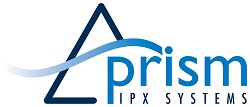




 The Mobility Blog
The Mobility Blog












